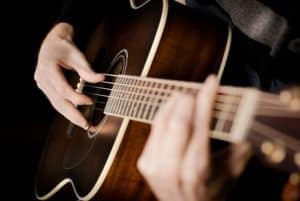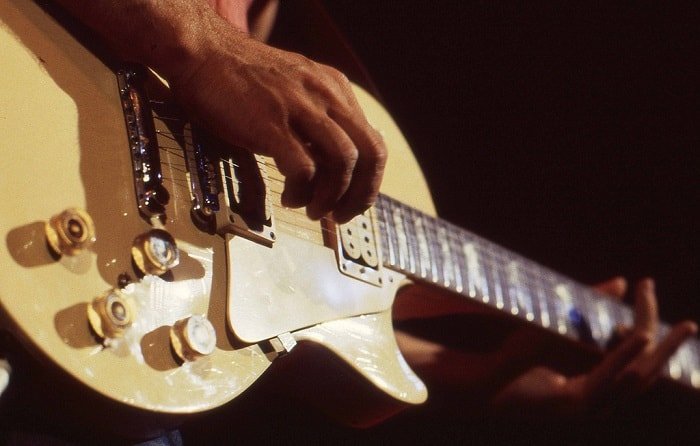 There’s are several ways you can play guitar. You can either use a pick, use your fingers, or use a combination of both.
There’s are several ways you can play guitar. You can either use a pick, use your fingers, or use a combination of both.
Some genres of music along with certain guitars lend themselves more to a particular style of picking.
For example, electric guitars are most commonly played using a pick. On the other hand, classical and flamingo guitars are something you want to play using your fingers.
Acoustic guitar is a type of guitar that lends itself to all possible styles. Some prefer to use a pick, others to finger pick. With that said, we are going to take a closer look at some finger picking styles that you can use with just about any guitar, although we are writing this with an acoustic guitar in mind.
If you always wanted to evolve your finger picking technique, stay tuned.
Styles Being Used Today
There are many finger picking styles being used today. Some are pretty basic and simple, while others are more complicated and hard to learn. Before we go into particular styles of finger picking, lets talk a little about the positioning of your right hand. Most western styles of finger picking require you to use a pretty standard right hand technique.
In most cases, you will play all six strings using your thumb and every finger except for your pinky. The core of most western finger picking styles is the separation of bass, or root notes from the rest. If you look at your average chord, your will see that their root notes are usually found on either E, A or D strings.
The idea is to have your thumb play these root notes on the strings we have just mentioned. This leaves the remaining three strings to be played with your index, middle and ring finger respectively.
One of the more basic finger pickings styles that most beginners choose to learn is: ‘walking the strings.‘
What this means is that you will play the strings in order, starting from the root note and going down one string at a time. This is a very simple finger picking style, although it’s not the most practical one.
With that said, it’s good for getting used to finger picking in general as it lets your fingers get used to the position of each string.
 One variation of this style is to walk down and back up the strings. This means that you start with your root note and end either on the root note itself, or the string before the root note on your way back up.
One variation of this style is to walk down and back up the strings. This means that you start with your root note and end either on the root note itself, or the string before the root note on your way back up.
Compared to the original technique, this one is more versatile, and definitely more practical for every day use.
Thing to remember is that each chord gives you different finger picking options to work with. Something like a G chord will let you play different bass notes aside from the root G note. You can play the B, or even the D as your bass note. This applies to other chords as well.
In general, which finger picking style you will have to use largely depends on the song you are trying to play. Some songs will require you to use an add finger picking pattern that is even counter intuitive, but that is what the chords and the overall tempo of the song require.
A good practice is to add strumming into your finger picking technique. It breaks up the pattern, and accentuates certain parts of the song. On a similar note, you can also pick two or more strings at the same time. This accomplishes the similar results as strumming.
Conclusion
Finger picking styles are numerous. This is one guitar technique which gives you full control over what you want to do. You can combine a whole bunch of different finger picking patterns in your performance, or you can stick to using just one. It’s completely up to you.
The only important thing is to practice the position of your right hand, and each finger in particular. Once you get fully comfortable with playing the strings with their assigned fingers, you will be able to use just about any finger picking style you wish to.
Start slow, and start simple. Skill will come with time.
**Have a look to our Article: Finger Picking Styles – Giving Chord A Whole New Sound
